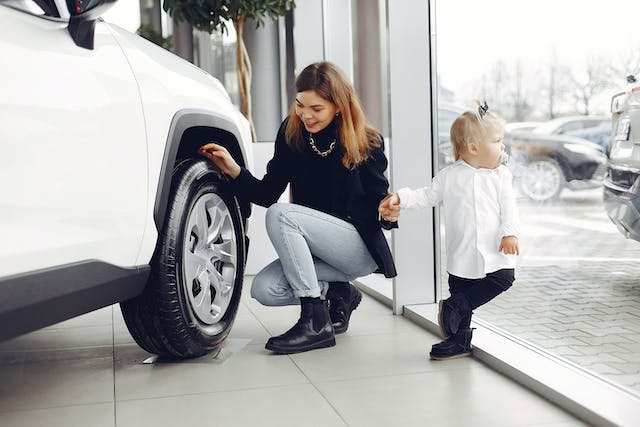A well-maintained car remains useful well beyond 100,000 miles and may have some life left in it for local driving even at 200,000 miles. Buying a used car with high mileage can give you a great deal on price, but is also a tricky matter. A car of relatively recent manufacture that’s seen heavy use, such as a retired rental car, almost invariably has less problems than one whose mileage accrued over several decades, with the inevitable rust and long-term materials fatigue.
Modern electronic records and vehicle histories available online reduce the risk of odometer rollback. Once quite frequent as a form of used car fraud, rollback is much rarer because potential cheaters know there’s a high probability they’ll be caught and lose the sale. Nevertheless, if possible, you should retrieve available electronic vehicle histories online to confirm what the odometer is telling you.
Checking Over a High Mileage Car
While high mileage should prompt you to be careful and thorough in your assessment of a potential used car purchase, it is not the primary factor you should use in judging the vehicle. Age is a much bigger concern. An older car has more rust and more failing parts than a frequently driven automobile that’s years younger.
Some of the most important things to examine about a high mileage car before deciding whether or not to buy it include:
- Check for rust. Large amounts of rust, especially in the floor pans, can equal structural weakness and ongoing problems. Large amounts of rust on a car with low to middle mileage can also be cue that the odometer is rolled back.
- Look for bubbled paint, which is probably hiding a rust problem. A newly repainted car may also have large amounts of lurking oxidation.
- If possible, give the engine a compression test. No cylinder should have less than 100 psi, and the difference in pressure between the individual cylinders shouldn’t exceed 10%. An engine that doesn’t meet these parameters will probably fail soon.
- Check the brakes and steering. Power steering problems quickly grow into an obnoxious money sink. If the steering feels heavy or you need to exert yourself to turn, power steering fluid is leaking and the problem will only worsen.
- Pay attention to the condition of the oil system. Look for a car with a history of regular oil changes and that doesn’t seem to be burning oil rapidly.
High Mileage Luxury Cars
Some of the best deals you may encounter in terms of reliability per dollar spent are provided by high mileage luxury cars. People who buy luxury cars to begin with are likely to sell them off for reasons of fashion rather than because the car is actually worn out, making it far less probable that you will inherit a previous driver’s headaches.
Furthermore, companies build luxury cars to higher standards than regular vehicles, knowing that their customers expect to receive their money’s worth. A luxury car driven for 100,000 miles will be in far better condition than a bare-bones, base trim vehicle with the same odometer reading, simply due to superior materials and engineering. Finding a used luxury car for sale can give you exceptionally rugged transport at a bargain price.
A Special Note on Older Low-Mileage Cars
Sometimes you’ll encounter an ad for a used car that is a decade or more old but has a very low odometer reading, not because of rollback but due to being driven very little. The car seller often tries to describe this as a positive (and likely genuinely believes that it is), using phrases such as “gently used” or “driven sparingly.” However, that low mileage may well have the opposite effect.
An older car with low mileage may actually have more problems and less remaining useful lifespan than one with medium to high mileage. Driving a vehicle regularly keeps its drivetrain in condition by bathing the surfaces in hot lubricants and other fluids, while ensuring those fluids don’t congeal into gunk. Additionally, rubber and plastic parts such as gaskets and seals get hard and crumbly if they aren’t warmed up and “worked” by the flexing and vibration of the vehicle in motion daily or several times a week.
Age is a better indicator of reliability than mileage alone. A slightly newer, heavily driven car will probably outlast the “lightly used” retirement car of someone’s grandparents. Old, low mileage cars are a bad deal due to the high risk of extremely expensive – or even irreparable – breakdown. Look for a newer car even if its mileage is far higher, or a regularly used car of the same age, if you want several more years of dependable driving.

